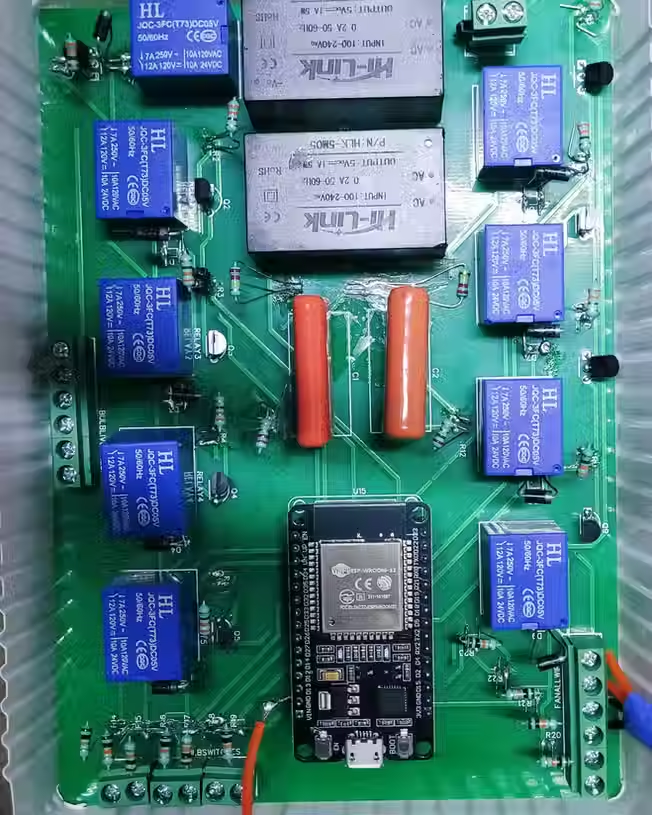

[07]
2025
Project
[Design]
Electrical Board Design Layout
Illustrative concept to demonstrate methods; parameters are intentionally generic. Any resemblance to real designs is coincidental. Content policy: T&Cs.
[07]
2025
Project
[Design]

Assembled PCB Board
Illustrative concept to demonstrate methods; parameters are intentionally generic. Any resemblance to real designs is coincidental. Content policy: T&Cs.
[07]
2025
Project
[Design]

Fabricated PCB Boards
Illustrative concept to demonstrate methods; parameters are intentionally generic. Any resemblance to real designs is coincidental. Content policy: T&Cs.
Home - Automation System
[07]
2025
Project
[Design]
Range of Visal Facets and Variations of Project.
Illustrative concept to demonstrate methods; parameters are intentionally generic. Any resemblance to real designs is coincidental. Content policy: T&Cs.

Commerical Home-Automation System
Design a compact ESP32‑based PCB that fits behind a standard household switchboard, automates up to 24 switch nodes—including dimmers and fan regulators—and integrates seamlessly with Home Assistant and virtual voice assistants while keeping per‑node cost below £0.50.
Working Details
Phase 1: MVP Definition & Cost Target – Established a minimum‑viable product capable of driving 24 independent nodes from a single module. The board dimensioning ensured it could nest behind legacy wall plates without civil rework. Benchmarking revealed a per‑switch cost of ~£0.50; an order of magnitude cheaper than the prevailing £6 market rate; while maintaining on‑board AC dimming and fan‑speed regulation capabilities.
Phase 2: PCB Layout & Fabrication – Schematics were captured in Altium Designer and EasyEDA, prioritising trace clearance for 240 V mains, EMI mitigation, and component height limits. The Gerber package was manufactured at JLCPCB; design-for-assembly measures reduced reflow rejects below 0.8 %. High‑current resilience and low‑latency digital-to-analog conversion were validated through transient‑load tests.
Phase 3: Local Server Integration – A Raspberry Pi 4 hosted the Home Assistant instance, selected for its low cost and ability to store data locally, preserving full functionality during Internet outages. Architecture documentation included fallback provisioning for repurposed desktop hardware at client request.
Phase 4: Firmware & User Customisation – ESP32 microcontrollers were flashed with board‑specific YAML via the Home Assistant ESPHome add‑on. Each GPIO mapping and entity name mirrored the client’s physical room layout, enabling intuitive control of lights, fans, and dimmers from any handheld device on the local network. OTA updates and encrypted MQTT telemetry completed the secure, maintainable stack.
End‑to‑end testing confirmed sub‑200 ms command latency, zero packet loss within 30 m Wi‑Fi range, and full compliance with IEC 60730 safety clauses for household control equipment.
Tools and Skillset
Altium & EasyEDA PCB design
ESP32 embedded firmware (ESPHome YAML)
Home Assistant & MQTT integration
Raspberry Pi server configuration
AC dimming & fan regulator circuits
High‑current trace clearance & EMI control
JLCPCB fabrication & DFM
Python/Arduino prototyping & testing
IEC 60730 compliance verification
Cost‑down engineering & BOM optimisation

















